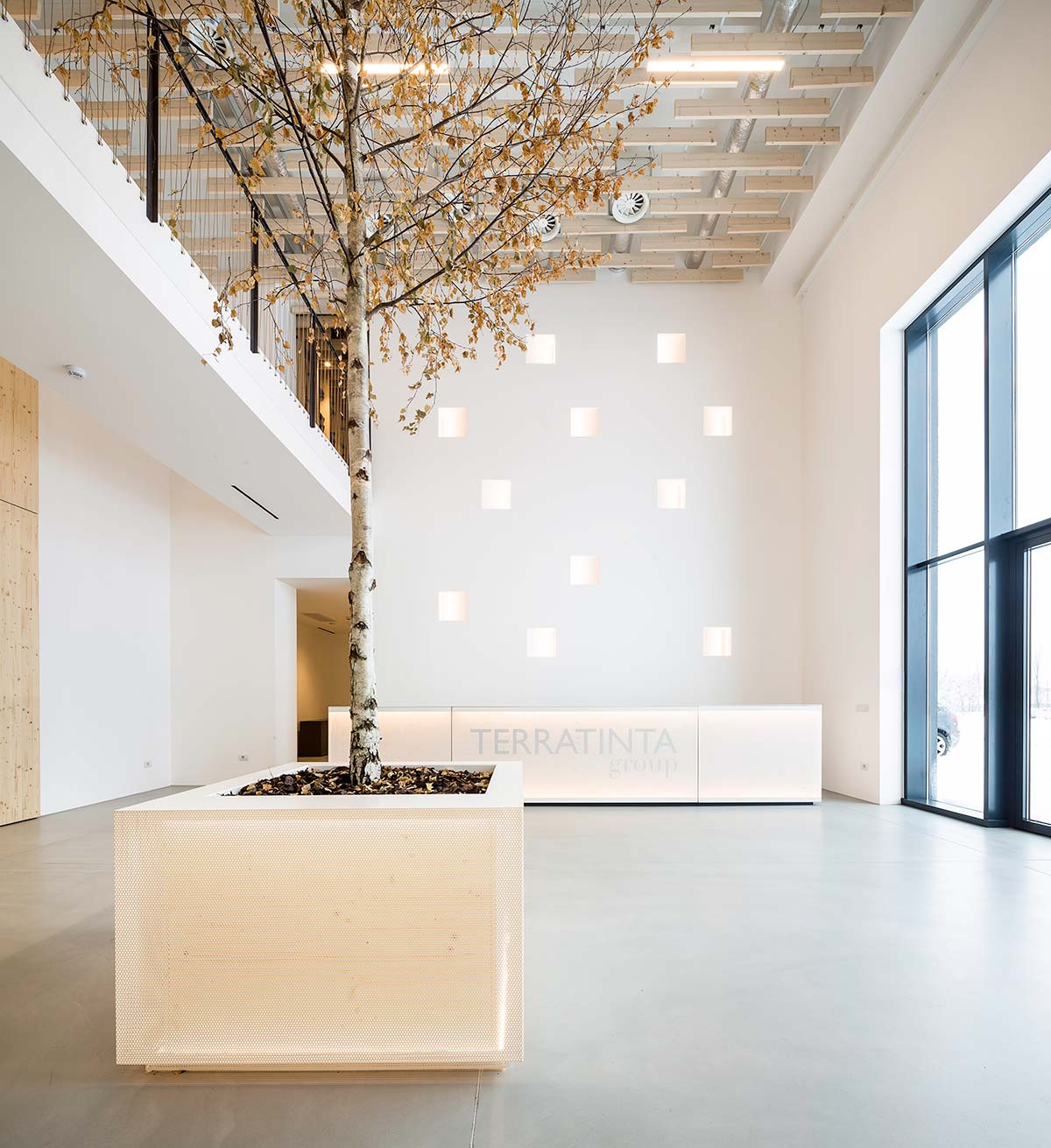LUCA MIGLIORINI, CEO OF TERRATINTA, TALKS ABOUT HOW IN 10 YEARS HE HAS BUILT AN ENSEMBLE THAT WORKS IN ITALY, BUT ABOVE ALL ALSO IN INTERNATIONAL MARKETS.
The key words of Terratinta?
In recent years the group has made a number of acquisitions: Terratinta Ceramiche began in 2010, after which Magica was acquired in 2014, Sartoria in 2018 and Micro last year. These 4 companies, reshaped in keeping with our vision, now have integrated offerings, reaching their high point in the context of the 2000 square meters of the new corporate showroom.
The 4 companies have different positioning and very recognizable production. Today the offerings of Terratinta Group respond to the strong demand for “light and minimal interior design,” a trend that originates in northern Europe and has now spread to thousands of residential and contract projects, where the role of color is also very important.
Speaking of color, the Scandinavian trends indicated tones of gray as the dominants, but in the last three years there has been a slow but constant insertion of new hues, which combined with wood produce what we now call warmer minimalism.

Terratinta Headquarter & Showroom – Fiorano modenese
When you say northern Europe, does that also include the United Kingdom?
Yes, of course. Benelux and Scandinavia are our strong markets, but Great Britain has also made a positive response. Today, in that geographical area, Terratinta Group is one of the top 10 Italian companies in terms of market share, and this is the result of correct positioning, strategic marketing and our focus on Made in Italy. The Scandinavian market has begun in recent years to also take different directions, but there is still strong demand connected with the tradition of those countries, which is why in 2014 we acquired the Magica group, a traditional ceramics firm whose collections fit the bill.
How is your sales network organized, and what do you tell your dealers who have to handle the 4 brands?
First, today Terratinta Group has a story to tell, and that is no small matter. The market has rewarded the company’s efforts over the years, and our strategy is to work with the dealers on all 4 brands; rather than splitting up the sales force and the type of proposals, we are looking for counterparts who can absorb our philosophy. This leads to economies in terms of logistics and sales management, and unified invoicing cuts down on customs costs. It is not easy to sell Terratinta Group; every day our clients receive dozens of stimuli, and our dealers have to have the intellectual and cultural capacity to present the positioning of the brand so that clients will stop and think, “maybe there is something new here.” The group builds its alliances on these factors. We are increasingly oriented towards the final consumer, but only through our partners in the territory. We are hiring promoters in Finland with our partner, in Antwerp we have a showroom with our distributor, and at the Business Design Centre in London we have a space with a partner who monitors the market and the designers. Our top 20 clients have seen us start with a very small office; they have believed in us, and today they produce important levels of sales. In our sector, that of ceramics, over the last 20 years there are three companies that have started from zero and now have over 20 million in billings: us, Mutina and Laminam.


Terratinta Headquarter & Showroom – Fiorano modenese
So in a digital world Terratinta Group wagers on relationships?
Definitely. The digital is indispensable for many aspects of the business, but direct relations are also indispensable, and the clients themselves want this. Naturally you have to have something to say, something that is not boring, in the right ways and with the right contents. We no longer sell products; we sell projects and concepts.
Terratinta Group, truly not a classic story.









